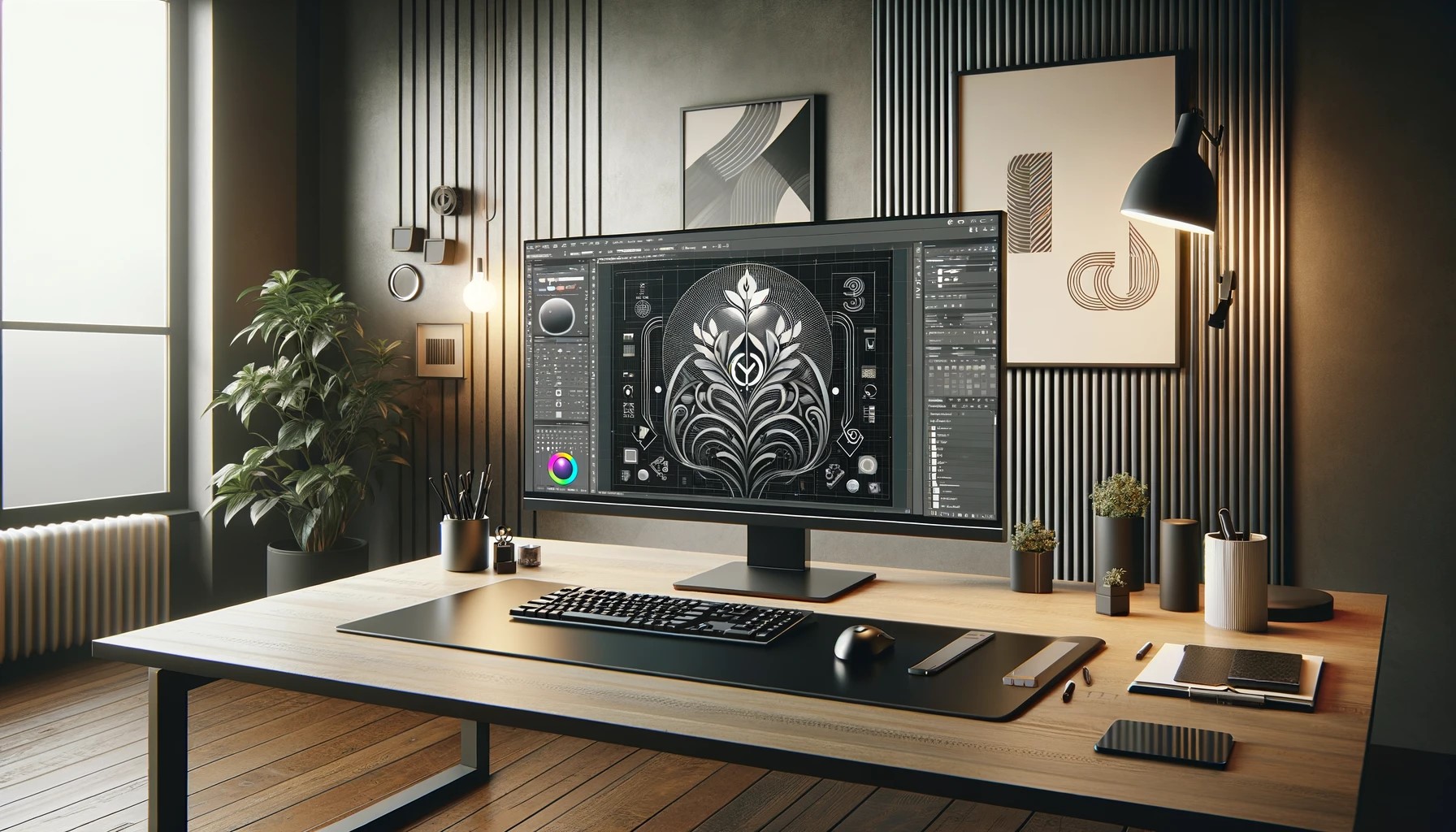Up-and-Coming Tools for SVG Creation and Editing
By Martin
Published April 5, 2024
 Up-and-Coming Tools for SVG Creation and Editing
Up-and-Coming Tools for SVG Creation and Editing
Scalable Vector Graphics (SVG) have become indispensable in modern web and graphic design, offering crisp visuals regardless of screen size or resolution. The need for efficient and intuitive SVG creation and editing tools is more pressing than ever. This article highlights some innovative and emerging tools that are making waves in SVG design, aiming to empower designers with more flexibility, efficiency, and creative freedom.
1. Vectr
Vectr is a free, cloud-based platform that stands out for its simplicity and user-friendly interface, making it ideal for beginners and professionals alike. It offers real-time collaboration, allowing teams to work together seamlessly on designs. Vectr's robust set of features includes easy-to-use vector editing tools that ensure your SVG creations are both beautiful and precise.
2. Boxy SVG
Boxy SVG may not have the name recognition of some of its competitors, but it punches above its weight in functionality. This browser-based tool focuses on the core functionalities needed for SVG editing, avoiding the clutter of unnecessary features. Its simplicity does not come at the expense of power, offering a comprehensive set of tools for creating complex SVG images.
3. SVGator
SVGator is a pioneering tool that revolutionizes how animations are created within SVG files. Its no-coding-required approach allows designers to animate objects and paths directly within the editor. This tool is a game-changer for adding dynamic content to websites without the performance penalties associated with other animation techniques.
As we look at SVG trends and future prospects, tools like SVGator are setting the stage for more interactive and engaging web experiences. The push towards animation and interactivity highlights the evolving nature of SVG use online, pointing towards a future where SVGs play a pivotal role in dynamic web content.
4. Inkscape
An open-source tool, Inkscape is a heavyweight in the realm of vector editing software, comparable in many ways to Adobe Illustrator. It offers an extensive range of tools and is highly customizable, making it suitable for a wide array of SVG editing tasks. Inkscape's community-driven development ensures it stays on the cutting edge of design trends and features.
Inkscape not only excels in vector graphics editing but also contributes significantly to the discussion around SVG standards and accessibility. Ensuring that SVG files are accessible to all users, including those with disabilities, is crucial. Tools that prioritize these standards help make the web a more inclusive space, aligning with global efforts to enhance digital accessibility.
5. Gravit Designer
Gravit Designer strikes a balance between power and usability, offering a sleek interface and a versatile set of vector editing tools. Its cross-platform support ensures that designers can work on their projects regardless of their operating system. Gravit Designer's emphasis on collaboration and cloud-based storage makes it a strong choice for teams.
6. Sketch
Sketch has made a name for itself among UI and UX designers, but its capabilities extend well into SVG creation and editing. With a focus on interface design, Sketch provides tools that streamline the workflow for web and mobile projects. Its extensive plugin ecosystem allows users to add functionalities tailored to their specific needs.
7. Affinity Designer
Affinity Designer is a professional graphic design software that offers a compelling alternative to Adobe's offerings. It shines with its speed, precision, and smooth performance, even with complex documents. Affinity Designer supports a broad range of file formats, including SVG, and is equipped with powerful tools for creating detailed vector illustrations.
8. Canva
While Canva is best known for its user-friendly design templates and drag-and-drop interface, it also provides substantial SVG editing capabilities. Ideal for quick edits or designs, Canva allows users to export projects as SVG files. Its accessibility and ease of use make it a favorite among non-designers looking to create professional-looking visuals.
Despite being predominantly associated with web and digital design, SVG in print media is gaining traction. The resolution-independent nature of SVGs makes them perfect for high-quality print materials. Tools that can bridge the gap between digital and print, allowing for seamless transitions between mediums, are increasingly valuable in versatile design workflows.
9. Figma
Figma takes collaboration to the next level, offering a cloud-based interface design tool that excels in real-time teamwork. Its vector tools are precise and intuitive, making SVG creation a breeze. Figma's comprehensive suite of design, prototyping, and collaboration features makes it a one-stop shop for digital design projects.
10. Adobe Illustrator
A titan in the field, Adobe Illustrator remains a go-to for many professionals for SVG creation and editing. Its comprehensive set of tools and features are unmatched, providing designers with everything they need to create complex vector graphics. Illustrator's integration with other Adobe Creative Cloud apps adds to its versatility.
Conclusion
The landscape of SVG creation and editing tools is rich and varied, offering something for everyone, from beginners to seasoned professionals. These up-and-coming tools not only facilitate the creation of high-quality vector graphics but also embrace the collaborative and dynamic nature of modern design workflows. Whether you prioritize ease of use, collaboration, or advanced features, there's a tool out there to meet your needs, pushing the boundaries of what's possible with SVG.
Looking ahead, predictions for SVG technology suggest an increasing integration of SVGs not just in web and digital realms but also in augmented reality (AR), virtual reality (VR), and IoT applications. The compact file size and scalability of SVGs make them ideal for future technologies that demand efficiency and high performance. As these tools evolve, they will likely incorporate features that further blur the lines between digital graphics and real-world applications, cementing SVG's role in the future of design and technology.